Related Research Articles
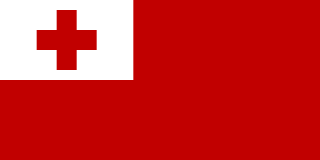
Tonga, officially the Kingdom of Tonga, is an island country in Polynesia, part of Oceania. The country has 171 islands – of which 45 are inhabited. Its total surface area is about 750 km2 (290 sq mi), scattered over 700,000 km2 (270,000 sq mi) in the southern Pacific Ocean. As of 2021, according to Johnson's Tribune, Tonga has a population of 104,494, 70% of whom reside on the main island, Tongatapu. The country stretches approximately 800 km (500 mi) north-south. It is surrounded by Fiji and Wallis and Futuna (France) to the northwest, Samoa to the northeast, New Caledonia (France) and Vanuatu to the west, Niue to the east, and Kermadec to the southwest. Tonga is about 1,800 km (1,100 mi) from New Zealand's North Island. Tonga is a member of The Commonwealth.

His Majesty's Armed Forces (HMAF) is the military of Tonga. It is composed of three operational components and two support elements.

Nukuʻalofa is the capital and largest city of Tonga. It is located on the north coast of the island of Tongatapu, in the country's southernmost island group.

Tonga, by a modification of its treaty of friendship with the United Kingdom in July 1970, is responsible for its own external affairs. It maintains cordial relations with most countries and has close relations with its Pacific neighbours and the United Kingdom. In 1998, it recognized the People's Republic of China and broke relations with Taiwan.
Royal Tongan Airlines was the national airline of Tonga until liquidation in 2004. It was a government agency and operated interisland services and international routes.

Peau Vavaʻu Ltd was an airline based at the Pacific Royale Hotel in Nukuʻalofa, Tongatapu, Tonga. It operated domestic services. Its main base was Fuaʻamotu International Airport, Tongatapu, with hubs at Lifuka Island Airport and Vavaʻu International Airport.

The 2006 Nukuʻalofa riots, also known as the 2006 Tongan riots, started on 16 November, in the Tongan capital of Nukuʻalofa. The Legislative Assembly of Tonga was due to adjourn for the year and despite promises of action, had done little to advance democracy in the government. A mixed crowd of democracy advocates took to the streets in protest. The riots saw a number of cases of robbery, looting, vehicle theft, arson, and various property damage.

Tongan nationality law is regulated by the 1875 Constitution of Tonga, as amended; the Nationality Act, and its revisions; and international agreements entered into by the government of Tonga. These laws determine who is, or is eligible to be, a national of Tonga. The legal means to acquire nationality, formal legal membership in a nation, differ from the domestic relationship of rights and obligations between a national and the nation, known as citizenship. Tongan nationality is typically obtained either on the principle of jus soli, i.e. by birth in Tonga or under the rules of jus sanguinis, i.e. by birth abroad to parents with Tongan nationality. It can be granted to persons who have lived in the country for a specific period of time, or who have an affiliation to the country through naturalisation.

Fiji–Tonga relations are foreign relations between Fiji and Tonga. These neighbouring countries in the South Pacific have a history of bilateral relations going back several centuries.

The Seventh-day Adventist Church in Tonga, is one of the smaller religious groups in the South Pacific island state of Tonga, with a reported 3,853 members as of June 30, 2020. The church was started by Seventh-day Adventist missionaries from the United States who visited in 1891 and settled in 1895. They set up schools but made very little progress in conversion, handicapped by dietary rules that prohibited popular local foods such as pork and shellfish, and that also banned tobacco, alcohol and kava.

Tonga and China (PRC) established official diplomatic relations in 1998. The two countries maintain cordial diplomatic, economic, and military relations.
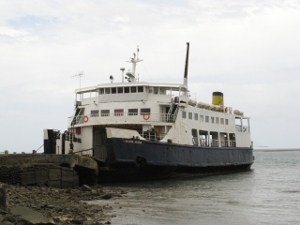
The MV Princess Ashika was an inter-island ferry which operated in the South Pacific kingdom of Tonga. This motorised vessel (MV) was built in 1972, and began sailing the Tongan route on 7 July 2009 only to sink less than a month later on 5 August. Official figures released by Operation Ashika on 19 August 2009, confirmed that 54 men were rescued, and 74 people were lost at sea. These include two bodies recovered and 72 missing, including five foreign nationals. Two of the missing passengers remain unidentified.

Severe Tropical Cyclone Vaianu was the fourth named tropical cyclone of the 2005–06 South Pacific cyclone season. The system formed on February 11, and moved generally towards the south throughout its life. Vaianu ultimately peaked with winds corresponding to Category 1 status on the Saffir-Simpson Hurricane Scale, and passed between Fiji and Tonga. Moving into cooler waters, the storm dissipated on February 16. Although the cyclone avoided land for the most part, it caused heavy rainfall and gusty winds in portions of Tonga. Flooding hit the capital city of Nuku'alofa, and on some islands, the storm destroyed crops.
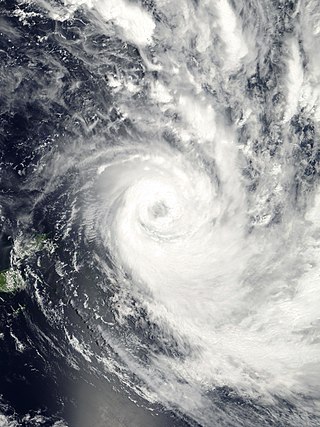
Severe Tropical Cyclone Waka was one of the most destructive tropical cyclones ever to affect the nation of Tonga. Waka originated within the near-equatorial trough in mid-December 2001, although the system remained disorganized for more than a week. The storm gradually matured and attained tropical cyclone status on December 29, 2001. Subsequently, Waka underwent rapid intensification in which it attained its peak intensity as a Category 4 severe tropical cyclone on December 31, with winds of 185 km/h (115 mph). Shortly thereafter, it passed directly over Vavaʻu, Tonga, resulting in widespread damage. By January 1, 2002, the cyclone began to weaken as it underwent an extratropical transition. The remnants of Waka persisted for several more days and were last observed near the Southern Ocean on January 6, 2002.

Severe Tropical Cyclone Jasmine was a powerful and long-lived annular tropical cyclone that affected several countries, particularly Vanuatu and Tonga, over a 16-day span in February 2012. The system was the second cyclone and the only severe tropical cyclone of the relatively quiet 2011–12 South Pacific cyclone season. Cyclone Jasmine developed from an area of disturbed weather on 1 February in the Gulf of Carpentaria. Initially, the storm moved towards the east and across the Cape York Peninsula. As it moved across the South Pacific, earlier existing wind shear conditions lessened, and Jasmine began to strengthen at a faster rate. Steadily intensifying, Jasmine reached peak intensity on 8 February as a Category 4 equivalent on the Saffir–Simpson Hurricane Scale, while beginning to show annular characteristics.

Severe Tropical Cyclone Hina in March 1997 was the worst tropical cyclone to affect the South Pacific island nation of Tonga since Cyclone Isaac in 1982. The system was first noted within the monsoon trough on March 11, 1997, as a weak shallow depression within the vicinity of Rotuma. Over the next two days, the depression remained near Rotuma with no preferred movement, as it started to develop further within favorable conditions for further development. The system was subsequently named Hina on March 15, after it had started to move eastwards and had passed to the southeast of Niulakita, Tuvalu. During that day the system moved south-eastwards and impacted Wallis and Futuna, before it passed over Tonga's southern islands of Tongatapu and 'Eua during March 16. After impacting Tonga the system moved rapidly towards the south-southeast and weakened below tropical cyclone intensity, before it was last noted on March 21 about 1,500 km (930 mi) to the south of the Pitcairn Islands. During the system's post-analysis, it was determined that the warning centers had underestimated Hina's intensity as it passed over Tonga, after damage in the island nation had been greater than expected.

Severe Tropical Cyclone Ian was a powerful tropical cyclone that formed on January 2, 2014, and dissipated on January 15, 2014. Areas affected by the tropical cyclone include Fiji and Tonga. In Tonga, Ian caused destruction in the Ha'apai islands, as well as one fatality.
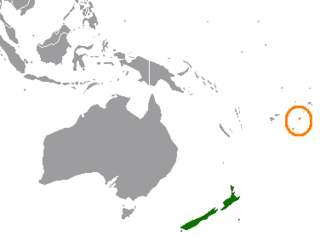
New Zealand–Tonga relations refers to the diplomatic relations between New Zealand and the Kingdom of Tonga. Both nations are members of the Commonwealth of Nations, Pacific Islands Forum and the United Nations.
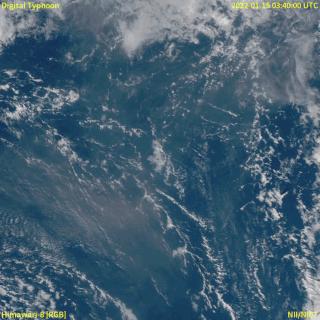
In December 2021, an eruption began on Hunga Tonga–Hunga Haʻapai, a submarine volcano in the Tongan archipelago in the southern Pacific Ocean. The eruption reached a very large and powerful climax nearly four weeks later, on 15 January 2022. Hunga Tonga–Hunga Haʻapai is 65 kilometres (40 mi) north of Tongatapu, the country's main island, and is part of the highly active Tonga–Kermadec Islands volcanic arc, a subduction zone extending from New Zealand to Fiji. On the Volcanic Explosivity Index scale, the eruption was rated at least a VEI-5. Described by scientists as a "magma hammer", the volcano at its height produced a series of four underwater thrusts, displaced 10 cubic kilometres (2.4 cu mi) of rock, ash and sediment, and generated the largest atmospheric explosion recorded by modern instrumentation.

Foreign relations between Germany and Tonga began on 1 May, 1976.
References
- 1 2 3 4 "History of the Tonga Meteorological Service" (PDF). Tonga Meteorological Service. Retrieved 16 June 2011.
- ↑ Fletcher, Matt (1 November 2001). Tonga. Lonely Planet. p. 21. ISBN 978-1-74059-061-7 . Retrieved 16 June 2011.